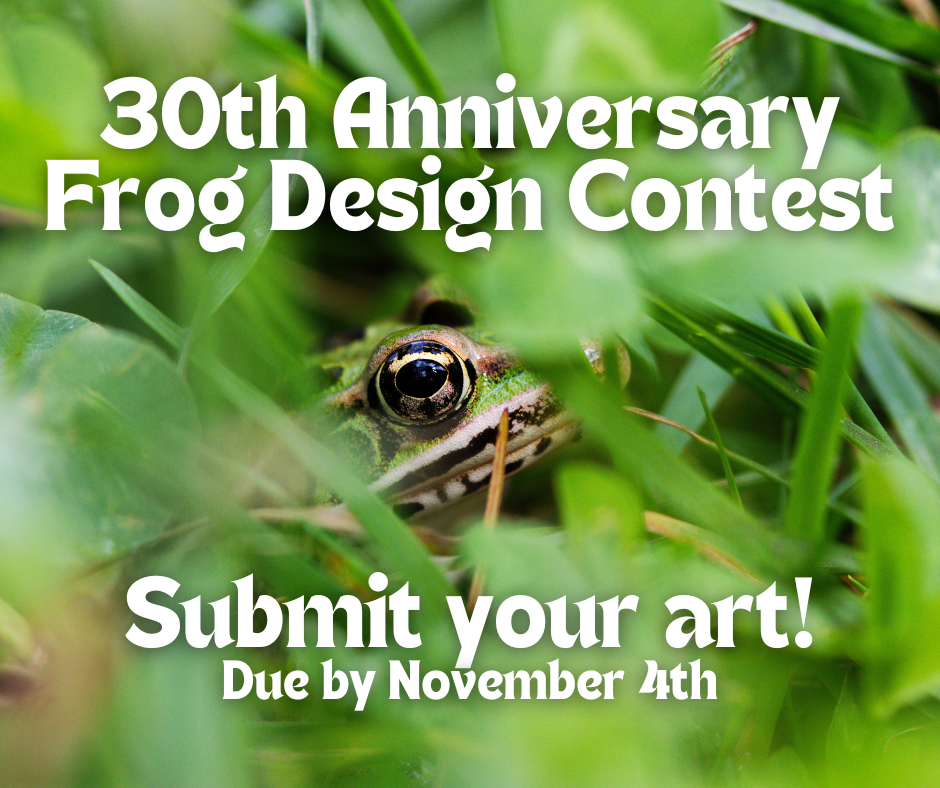The mission of Ney Nature Center is to inspire appreciation and respect for nature, and as we approach 2025 we want to recognize and acknowledge one of the biggest moments in the origin of the nature center, the discovery of the deformed frogs in Ney’s frog pond in 1995. In the 30th year since this discovery, we want to celebrate the origins of this mission and where we are headed in the next 30 years. Curious what we have planned? We will update you on social media and our website as we get closer so don’t forget to follow along! If you’re already excited, consider submitting for our art contest!

What is the story of the deformed frogs? The now-famous Frog Pond, widely recognized as the site of the discovery of deformed frogs in 1995, was originally “just a slough” when European settlers arrived in the mid-1800s. One can only imagine the plethera of wildlife that existed in and around the prairie pothole wetland when small scale farming began here. As agriculture expanded in the early 1900s, the pond was drained to make way for more cropland. Highly productive in drought years, less so in wet cycles, crop production at the site was inconsistent.
Ruby Ney’s vision of letting the land go back to nature was realized when Don Ney, her nephew, had the pond restored in 1989. On a field trip in 1995, Minnesota New Country School (MNCS) students found dozens of deformed leopard frogs that they began to document before sending that information to the Minnesota Pollution Control Agency. Judy Helgen, the MPCA biologist who spearheaded the investigation of the phenomenon, described finding frogs with missing or extra legs in numbers she had never seen before. In her role with the MPCA, Helgen studied wetland health and helped create benchmarks that assess the health of wetlands.


Their documentation of this phenomenon caused the agency to launch a scientific investigation that would continue for several years. In total, over 13,000 frogs were collected across Minnesota as a part of this study. Learn more about Judy Helgen and her work with the frogs and the MPCA here. Although research on the cause ended in 2002 without definitive answers, the discovery raised global awareness about the environmental consequences of human activity on wetlands and other fragile ecosystems. As the news spread of the original discovery, people from all over the country began reporting & documenting their own findings of deformed frogs.
MNCS students were at the heart of this investigation and advocacy surrounding the protection of these wetlands; they are part of the reason that today we still have a strong community base supporting the preservation of Ney’s 446 acres. Becky Pollack, now the Executive Director of Ney Nature Center, was a student at MNCS in 1996 when the frogs were found, and her experience watching the investigation unfold and participating in it is part of the reason why she found herself working in environmental education and eventually at Ney so many years later.
Since then, we are happy to report that no deformities have been found in the years since the large populations of affected frogs in 1995 and 1996. The pond hosts a variety of waterfowl and attracts mammals such as coyotes, deer, raccoons, and foxes, in addition to many species of frogs. Ruby would likely be pleased to see her vision become reality at the Ney Pond!

One of the many ways we plan to mark this anniversary is by holding an art contest to involve the community. We are looking for artists to create a design to commemorate the 30th anniversary of the discovery of the deformed frogs at Ney’s pond! We will have two contest winners, one adult and one youth. Our goal with this contest and the year of special events will be to center the community in the narrative history of the land & water. Oh, and of course, we will give our winners a Ney camp mug and some 2025 maple syrup! If you’re interested, visit our contest submission link to learn more.
Keep an eye out for upcoming information on our anniversary plans in 2025, and please tell your friends and family to consider submitting art for the contest! We have forms available at the nature center, but you can download and submit the forms online as well!

